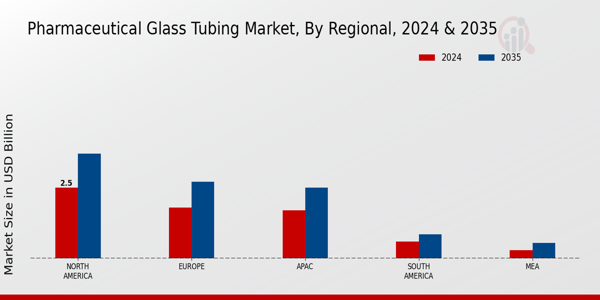Rising Demand for Biopharmaceuticals
The Pharmaceutical Glass Tubing Market is experiencing a notable increase in demand for biopharmaceuticals, driven by the growing prevalence of chronic diseases and the need for advanced therapies. Biopharmaceuticals, which often require specialized packaging solutions, are increasingly being developed and produced in glass vials and syringes. This trend is expected to propel the demand for pharmaceutical glass tubing, as manufacturers seek reliable and safe materials for drug delivery systems. According to recent data, the biopharmaceutical sector is projected to grow at a compound annual growth rate of over 8% in the coming years, further emphasizing the need for high-quality glass tubing solutions in the pharmaceutical industry.
Regulatory Compliance and Quality Standards
The Pharmaceutical Glass Tubing Market is significantly influenced by stringent regulatory compliance and quality standards imposed by health authorities. These regulations ensure that pharmaceutical products are safe, effective, and of high quality. As a result, manufacturers are increasingly investing in high-grade glass tubing that meets these rigorous standards. The need for compliance with regulations such as the FDA's Current Good Manufacturing Practice (CGMP) is driving the demand for pharmaceutical glass tubing, as companies strive to avoid costly recalls and maintain their market reputation. This focus on quality and compliance is likely to sustain growth in the pharmaceutical glass tubing market.
Innovations in Glass Manufacturing Techniques
The Pharmaceutical Glass Tubing Market is benefiting from innovations in glass manufacturing techniques, which enhance the performance and safety of glass products. Advances such as the development of borosilicate glass and improved annealing processes are leading to stronger, more durable glass tubing that can withstand extreme conditions. These innovations not only improve the integrity of pharmaceutical packaging but also reduce the risk of contamination. As the industry continues to evolve, manufacturers are likely to adopt these advanced techniques to meet the growing demands for high-quality glass tubing, thereby driving market growth.
Increasing Focus on Sustainable Packaging Solutions
The Pharmaceutical Glass Tubing Market is witnessing a shift towards sustainable packaging solutions, as environmental concerns become more prominent. Manufacturers are increasingly seeking glass tubing options that are recyclable and produced with minimal environmental impact. This trend is driven by both regulatory pressures and consumer preferences for eco-friendly products. The adoption of sustainable practices in the production of pharmaceutical glass tubing is expected to enhance brand loyalty and market competitiveness. As companies strive to align with sustainability goals, the demand for environmentally friendly glass solutions is likely to rise, contributing to the overall growth of the market.
Expansion of Pharmaceutical Manufacturing Facilities
The Pharmaceutical Glass Tubing Market is poised for growth due to the expansion of pharmaceutical manufacturing facilities across various regions. As companies invest in new production capabilities to meet rising drug demand, the need for reliable glass tubing solutions becomes increasingly critical. This expansion is often accompanied by the establishment of advanced manufacturing processes that require high-quality glass materials. The increase in production capacity is expected to drive the demand for pharmaceutical glass tubing, as manufacturers seek to ensure the integrity and safety of their products. This trend indicates a robust outlook for the pharmaceutical glass tubing market in the coming years.


















Leave a Comment